In an increasingly complex and interconnected world, security threats to businesses are more diverse than ever. From physical risks such as theft and vandalism to operational threats like unauthorised access and internal fraud, businesses must be proactive in safeguarding their assets and operations. This is where a security framework becomes essential.
A security framework is a structured approach to managing security risks. It involves establishing processes, policies, and tools to protect an organisation’s assets, employees, and reputation. At Smartsec Security Solutions, we help businesses develop and implement effective security frameworks that address their unique security challenges and ensure long-term protection.
In this article, we’ll explore what a security framework is, why it’s crucial for businesses of all sizes, and how to implement one to enhance your organisation’s security posture.
What is a Security Framework?
A security framework is a structured set of guidelines, policies, and best practices that businesses follow to manage their security risks effectively. It provides a systematic approach to identifying, assessing, mitigating, and responding to security threats. The purpose of a security framework is to create a comprehensive strategy that covers all aspects of an organisation’s security—whether physical or operational.
A well-designed security framework addresses multiple areas, including access control, surveillance, incident response, employee training, and compliance with relevant regulations. By following this structured approach, businesses can ensure that their security measures are aligned with their goals and remain adaptable to changing risks.
Why is a Security Framework Important?
Having a security framework in place is essential for several reasons. It helps businesses operate more securely and reduces the likelihood of security incidents that could lead to financial losses, reputational damage, or operational disruptions. Here are a few key reasons why it is critical for businesses:
1. Proactive Risk Management
A security framework enables businesses to take a proactive approach to risk management. Instead of reacting to incidents as they occur, a framework helps organisations identify potential threats in advance, assess their likelihood, and implement measures to mitigate them. This reduces the risk of costly security breaches or operational disruptions and ensures that businesses are better prepared to handle security challenges.
2. Consistency Across Security Practices
One of the primary benefits of having a security framework is ensuring consistency across all security practices. By following a standardised set of guidelines, businesses can ensure that all employees and security personnel understand their roles and responsibilities. This consistency is critical for ensuring that security protocols are followed correctly and that incidents are handled in a coordinated and effective manner.
3. Alignment with Business Objectives
A security framework helps align security measures with broader business objectives. For example, as a business expands or introduces new products or services, the security framework can be updated to address new risks associated with these changes. This ensures that security strategies support the business’s growth while protecting critical assets and maintaining operational continuity.
4. Enhancing Compliance and Legal Protection
Many industries have specific security regulations and standards that businesses must follow. A security framework helps ensure that organisations remain compliant with these regulations, reducing the risk of legal issues or fines. By having documented policies and procedures in place, businesses can demonstrate their commitment to security and compliance in the event of an audit or investigation.
5. Strengthening Incident Response
A security framework includes clear protocols for responding to security incidents. Whether it’s a break-in, a data breach, or an emergency evacuation, the framework provides step-by-step guidance on how to manage the situation. This structured approach ensures that incidents are handled quickly and effectively, minimising their impact on the business.
Key Components of an Effective Security Framework
A strong security framework covers several key areas to ensure comprehensive protection for the business. Here are the essential components that should be included in any security framework:
1. Risk Assessment and Management
The foundation of any security framework is a thorough risk assessment. This involves identifying potential security threats—whether physical, operational, or external—and assessing the likelihood and impact of those risks. The assessment helps businesses prioritise risks and allocate resources accordingly. Once risks are identified, a risk management strategy is developed to mitigate or eliminate those threats.
2. Access Control Policies
Access control is a critical aspect of any security framework. It defines how employees, visitors, contractors, and vendors can access specific areas of a business, whether it’s physical premises or digital systems. An effective access control policy includes guidelines for issuing access credentials, monitoring entry points, and revoking access when necessary. Additionally, it ensures that sensitive areas, such as server rooms or financial departments, are restricted to authorised personnel only.
3. Surveillance and Monitoring Systems
A security framework should include the use of surveillance and monitoring systems to keep track of key areas. This could involve installing security cameras, motion sensors, or alarms to monitor the property and detect potential threats in real time. These systems act as a deterrent to criminal activity while also providing valuable evidence in the event of an incident. Integrating monitoring systems with other security measures ensures seamless communication and rapid responses to potential threats.
4. Incident Response Protocols
Incident response is a crucial part of a security framework. Having detailed incident response protocols in place ensures that employees and security personnel know exactly how to react in the event of a security breach or emergency. These protocols should cover a wide range of scenarios, from natural disasters to unauthorised access or theft. The goal is to minimise the damage caused by an incident and ensure that operations can resume as quickly as possible.
5. Employee Training and Awareness
A security framework is only as effective as the people who follow it. Therefore, employee training and awareness are vital components. Businesses should provide regular training on security policies and procedures, ensuring that employees understand how to identify risks and follow protocols during incidents. Security awareness programs can also include drills and simulations to ensure that staff are prepared for real-life situations.
6. Compliance and Regulatory Requirements
Ensuring compliance with industry regulations is an important aspect of a security framework. Businesses in certain industries, such as healthcare, finance, or government, must adhere to specific security standards. The framework should include policies and procedures that meet these requirements, ensuring that the business is protected from regulatory penalties and legal liabilities.
How Smartsec Security Solutions Can Help
At Smartsec Security Solutions, we specialise in helping businesses develop comprehensive security frameworks that address their unique needs and risks. Whether you need assistance with risk assessments, access control, or incident response, our team of experts provides tailored solutions that align with your business objectives.
Why Choose Smartsec Security Solutions?
- Independent Expertise: We offer unbiased advice and recommendations, ensuring that your security framework is designed solely based on your business’s needs.
- Tailored Solutions: Our security frameworks are customised to fit the specific risks, regulations, and goals of your organisation.
- Comprehensive Service: From risk assessment to incident response and training, we provide end-to-end support to help you build a strong, effective security framework.
- Local Knowledge: Based in Western Australia, we understand the unique security challenges businesses in the region face and can offer solutions that are practical and compliant with local regulations.
To learn more about how we can assist with developing a security framework, visit our services page or contact us for a consultation.
Conclusion
A well-designed framework is essential for businesses looking to manage security risks proactively and consistently.
By providing a structured approach to security, businesses can reduce the likelihood of incidents, enhance compliance, and ensure that all security practices align with their broader objectives.
At Smartsec Security Solutions, we help businesses across Western Australia implement effective security frameworks that protect their assets and ensure long-term resilience. For more information or to schedule a consultation, visit our services page.



